Matador Network's Blog, page 1035
August 13, 2019
Wild animal encounters in the US

Have you ever gone on an outdoor adventure with the hopes of finding fantastic beasts, only to see fellow tourists around every turn instead? For wildlife lovers, this is an all-too-common occurrence. Searching for animals in their natural habitats can be frustrating and, in popular tourist destinations, fruitless. The alternative is visiting a zoo, but these inorganic experiences can feel at best gimmicky, sanitized, and impersonal — and, at worst, unethical.
Luckily, the United States is chockablock with family-friendly locales that bridge this gap between authenticity and ease. These eight destinations offer opportunities to meet some of North America’s indigenous animals — and a few furry foreigners — in safe, natural settings.
1. Alaska Wildlife Conservation Center — Girdwood, Alaska
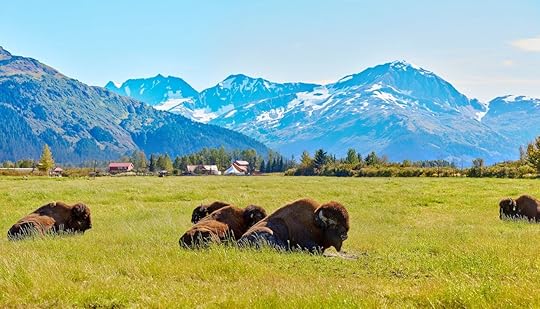
Photo: Michal Sarauer/Shutterstock
Dedicated to caring for the 49th state’s mammoth-sized animal population, the Alaska Wildlife Conservation Center provides a space to meet beasts you might be reluctant to find in the wild. Some of the 16 native species you’ll find here include moose, wolves, bison, a bevy of bears, and a docile porcupine named Snickers. This nonprofit supports orphaned and injured animals, most of which can’t be released back into the wild because of their reliance on humans.
Located on over 200 acres in the verdant valley of Girdwood, about an hour south of Anchorage, the AWCC allows each animal to roam freely in spaces far less cramped than what they’d find at a corporate zoo. It has a pretty sweet backyard landscape, too. The grounds provide panoramic views of the Chugach Mountains rising from thick willow tree forests, making this an equally appealing stop for those looking to take in the Alaskan countryside.
2. Arizona-Sonora Desert Museum — Tucson, Arizona

Photo: Joseph Sohm/Shutterstock
The flora and fauna of Arizona’s Sonoran Desert appear like science fiction creatures to the foreign eye, and the Arizona-Sonora Desert Museum is the best place to see the fascinating wildlife up close. Situated just outside Saguaro National Park on 98 acres of land, the museum features over 1,200 plants and 230 mammals, reptiles, amphibians, insects, and birds that are native to the region.
The Desert Loop Trail, a two-mile outdoor hike through gardens and animal sanctuaries, is the museum’s top attraction. Winding through the cacti-laden red-rock landscape, visitors can see animals like coatimundi, free-flying falcons, and coyotes in their natural habitats. It’s a Southwest safari, only you don’t have to worry about stepping on a rattlesnake. They’re safely stowed away for your pleasurable viewing, too.
3. Montana Grizzly Encounter — Bozeman, Montana

Photo: Alexander Oganezov/Shutterstock
This Montana-based grizzly center is a sanctuary for bears born in unsafe captive environments. The bears, which will never be reintegrated into the wild because of their connection to humans, are afforded a loving home here in the heart of Big Sky Country.
You won’t find any cages at this rescue center, which focuses on educating visitors about protecting these giant beasts. Expert staff members give a bear safety tutorial before taking tourists to meet the four hairy mammals currently living at MGE. The tour is a useful introduction for people coming into contact with America’s bear population for the first time.
4. Ann W. Richards Congress Avenue Bridge — Austin, Texas
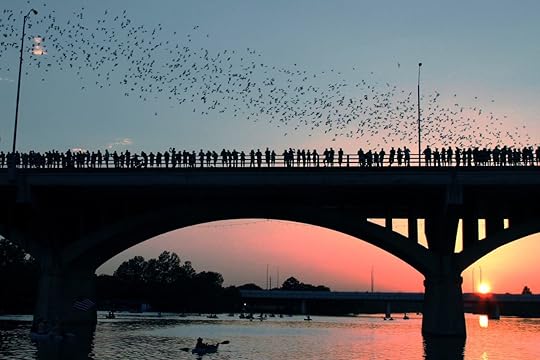
Photo: Kushal Bose/Shutterstock
The Congress Avenue Bridge in Austin, Texas, is home to approximately 1.5 million bats — the largest urban bat colony in the world. Most of the bats, which live in one-inch-wide holes on the underside of the bridge, are pregnant females making an annual migration from Mexico. They spend their nights hunting insects to help feed themselves and their newborns, providing the city with a 100-percent organic, Mother Nature-approved pesticide.
You can see the colony fly from its man-made bat cave and into the air for about 30 minutes every sundown from March to November. It may be a bit alarming at first — a chiroptophobic’s nightmare, no doubt — but watching the bats emerge as they begin their nightly feast of flies is a natural wonder worth watching. Clouds of bats blotting out a city skyline is an image otherwise reserved for fantastical superhero films, but here, it’s woven into the fabric of Austin’s “weird” identity.
Go early to grab a spot on the bridge, or along the Colorado River winding below, for a totally free vantage point of the little critters swarming the sky.
5. Blue Spring State Park — Orange City, Florida

Photo: Danita Delmont/Shutterstock
The naturally heated swimming hole in Blue Spring State Park, located in central Florida, becomes a wintertime refuge for manatees between November and March. Up to 500 of these sirenian swimmers were counted lounging around the 73-degree Fahrenheit water last season. Manatees come here in search of the warm temperatures, but visitors benefit from the clear waters that make it easy to see the animals enjoying their seasonal escape. Travelers interested in watching the annual gathering can observe safely from a stretch of boardwalk that abuts St. Johns River.
6. Ke’e Beach — Kauai, Hawaii

Photo: Nina B/Shutterstock
An eclectic crew of colorful fish can be found darting around the coral of this reef-protected snorkel destination along Kauai‘s northern coast. You only need some snorkel gear to see the all-access aquarium for yourself. The rest is totally free. Fish, however, are the least exciting piscine creatures people will see swimming at this beach. Sea turtles are often spotted along the shallow ocean floor, and endangered Hawaiian monk seals regularly make an appearance onshore.
For those who don’t feel like getting in the water, you’re still bound to see plenty of wildlife aside from monk seals. The beautifully colorful untamed chickens and noisy roosters of Hawaii, which are a curious genetic breed of their own, can be found almost everywhere on the island. The proliferation of these cocks occurred as a result of Hurricane Iniki in 1992. Chicken coops all over the island were destroyed, and many hens and roosters were released into the countryside. The birds got busy doing it as they do on the Discovery Channel, and pretty soon Kauai became their very own Garden of Eden.
7. Duke Lemur Center — Durham, North Carolina

Photo: Alex Krassel/Shutterstock
The Duke Lemur Center (DLC) is America’s premier institute for studying Madagascar’s myriad simian populations and home to the largest collection of these endangered mammals outside their natural habitat.
Of the 15 types of lemurs and lorises on site, the most recognizable are the Coquerel’s sifakas and ring-tailed lemurs. Sifakas, made famous for starring on the PBS kids show Zoboomofoo, which was partially filmed at the DLC, are known for their cream-and-auburn coats. They’re often referred to as “dancing lemurs” because of the balletic way they hop across the ground and propel themselves through the air at distances greater than 20 feet. Ring-tailed lemurs, distinguished by their bushy black and gray tails, are the most widely studied lemurs and are commonly used as the symbol of Madagascar.
Both these species live in protected forests under the care of Duke’s research center and can be visited on public and private tours. These guided opportunities are led by knowledgeable staff members who exude passion for the conservation work done at the center. Plan well in advance, as it’s nearly impossible to book a same-day excursion.
8. Fisherman’s Wharf — San Francisco, California
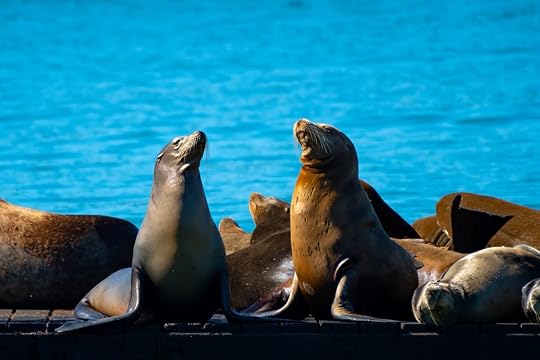
Photo: Debbie Ann Powell/Shutterstock
You can smell this attraction long before you see it — and not in a good way — but this free, touristy hotspot at Fisherman’s Wharf in San Francisco is still famous for a reason. There’s no other major city where you can catch up to 1,700 sea lions swimming, squawking, and sunbathing all in one secluded place. Watching the animals fight for a spot at the pier is like a clown-car comedy. They’re packed on the docks tighter than sardines as they play and bark in full view. The sea lions are wild, so their numbers wax and wane with the season, but you can be sure there will always be a few hanging out no matter the time of year.
These pinnipeds weren’t always a fixture in San Francisco. When an earthquake hit the Bay Area in 1989, sea lions started arriving in droves, much to the chagrin of their maritime neighbors. After discussing what to do, the Marine Mammal Center‘s recommendation to protect the animals won out. California sea lions have been happily calling K Dock at Pier 39 their home ever since. 

More like this: The best places to see New Zealand’s unique and wonderful wildlife
The post 8 places to encounter wild animals up close in the US appeared first on Matador Network.

Best luxury spas in South Florida

If you’re still looking for a last-minute, end-of-summer getaway but wild Labor Day weekend parties aren’t exactly your cup of tea, a luxury spa vacation might be in order. This summer, there’s no better place to go for some self-care and relaxation than South Florida. The hottest months of the year are the perfect time to cool down and unwind in Miami, Fort Lauderdale, and the Palm Beaches, with the most exclusive establishments offering treatments with discounts of up to 50 percent due to the low season. The heat shouldn’t bother you anyway — you’ll spend most of the day in air-conditioned spas and the evening cooling off in the pool.
This summer, the area’s unique assortment of wellness options runs the gamut from ancient South American treatments at Faena Miami Beach’s Tierra Santa to CBD-infused mani and pedis at the Diplomat in Hollywood. With more than 60 luxury oceanfront retreats to choose from, deciding on a destination can be overwhelming, so read on for our top picks of the most noteworthy spas throughout South Florida to visit this Labor Day.
1. Acqualina Spa by ESPA
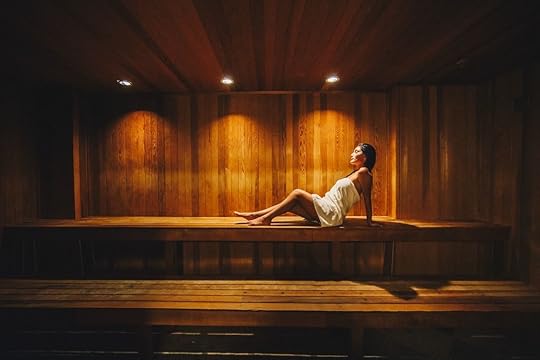
Photo: Acqualina Resort and Spa/Facebook
At over 20,000 square feet, Acqualina Spa has some of Miami Beach’s most luxurious amenities: a sparkling crystal steam room, a Himalayan salt wall, a refreshing ice fountain, and a shower with cool arctic and warm Caribbean mists. This summer, choose from two discounted holistic rituals, a Summer Firming facial, which includes special eye-area nourishment, and a scalp massage or soothing Swedish massage with essential oils of sandalwood and rose geranium. The hotel’s co-ed oceanfront terrace with a heated jet pool and Roman waterfall is the perfect place to enjoy the hotel’s background of rustling palm trees and the warm Atlantic ocean breeze.
Where: 17875 Collins Ave, Sunny Isles Beach
2. The Atlantic Hotel & Spa

Photo: The Atlantic Hotel & Spa/Facebook
Visit this spa in Fort Lauderdale Beach for unique treatments rich in seawater, seaside plant oils, and salts. For $99, you can book a Hydrate and Plump facial with multi-dimensional hydration or the Atlantic Swedish massage, where Moroccan oil is massaged into the scalp to relieve dryness and leave the hair healthy and shiny. If you are in need of a longer ritual, try the Atlantic Journey, which includes a 50-minute massage and a classic manicure and pedicure for $199. After your treatment, experience the sauna, steam room, and jacuzzi before lounging by the hotel’s rooftop pool and to enjoy serene oceanfront views.
Where: 601 N Fort Lauderdale Beach Blvd, Fort Lauderdale
3. The Diplomat Spa

Photo: The Diplomat Beach Resort/Facebook
On the special summer menu at this waterfront sanctuary along Hollywood Beach, find two signature treatments, a Swedish massage enhanced with aromatherapy to increase circulation, reduce tension, and induce deep relaxation and the Diplomat facial with collagen eye treatment designed to revitalize the skin. There’s also a special CBD herbalistic ritual manicure and pedicure, which includes exfoliation and a deep hydrating mask. Make sure you save time to enjoy the rain wall and steam room before taking a dip in the resort’s infinity pool. Cost for each treatment is $99 through September 30.
Where: 3555 S Ocean Dr, Hollywood
4. Eau Palm Beach Resort & Spa

Photo: Eau Palm Beach Resort & Spa/Facebook
This 40,000-square-foot retreat in the secluded town of Manalapan in Palm Beach is the ideal destination if you want to get away from everything. Begin your visit with a glass of Champagne and then make a wish in the spa’s wishing well before immersing yourself in a wonderland of etched-glass mirrors, gleaming wood floors, marble baths, and sheer, flowing drapery. After your ritual, lounge in the alfresco, self-centered garden, a tropical oasis lined with draped cabanas, and make time to enjoy the indoor whirlpool, which features an overhead waterfall. Menu highlights are The Muse of Music massage where you can customize the color and scent of your treatment room ($119), MJ’s Mellow Yellow CBD manicures ($50) and pedicures ($60), and the Express Brazilian Blow-Out ($150).
Where: 100 S Ocean Blvd, Manalapan
5. The Spa at Carillon Miami
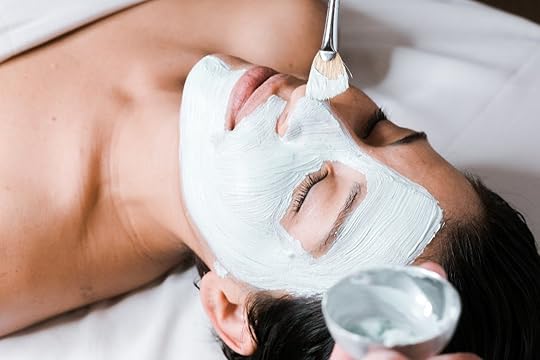
Photo: Carillon Miami Wellness Resort/Facebook
At this sophisticated, 70,000-square-foot beachfront spa and wellness facility in Miami Beach, you can indulge in any 50-minute massage or body treatment from its expensive regular menu for only $109. Options range from a Himalayan Salt Stone Massage to a Rejuvenating Treatment combining a foot exfoliation and warm body hydration. Another great option is the 80-minute electro-sound lymphatic drainage therapy followed by an infrared sauna session, designed to reduces cellulite, slims the waist, and enhance cell nourishment and immunity ($139). Don’t miss the Thermal Experience, which includes aromatherapy steam rooms, a Finnish sauna, an open-air HydroSpa, rainfall showers, and an igloo spritzing cooling, aromatic mists. For a $40 upcharge, you can also enjoy the hotel’s private pool and beach.
Where: 6801 Collins Ave, Miami Beach
6. The Spa at Mandarin Oriental

Photo: Mandarin Oriental, Miami/Facebook
A unique roster of treatments at this luxurious urban oasis in the vibrant Brickell neighborhood combines Florida elements and Oriental techniques. Summer treatments include a $139 Mo Destress customizable full body massage with the spa’s signature aromatherapy line, a keratin hair treatment at more than $200 off its regular price, and a range of Biologique Recherche facials for immediate rejuvenating results. If you are seeking a personal haven, request the spa suite for one, where you can experience a bespoke series of treatments for $195/hour. From Monday to Thursday, spa guests have access to the hotel’s exclusive pool and beach.
Where: 500 Brickell Key Dr, Miami
7. The Spa at Auberge Beach
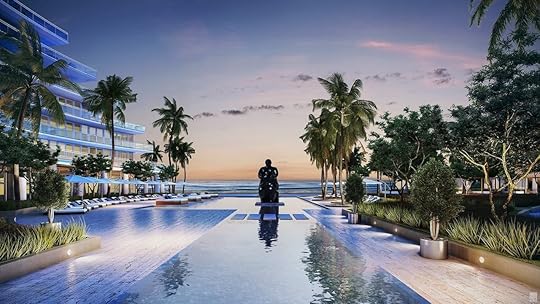
Photo: Auberge Beach Residences & Spa Fort Lauderdale/Facebook
The Auberge Beach Residences in Fort Lauderdale beach is home to this new luxury spa, where therapists perform indulgent body therapies indoors or at oceanfront garden cabanas. From August to September, the spa is featuring a discounted plumping and collagen-boosting Rx Facial and a 50-minute Auberge Soothe Massage with layers of aromatherapy, cleansing stone crop back scrub, hot stones, and pressure point crystals ($99 each). There’s also a $189 vitality package on the menu, which combines a 50-minute massage and a custom organic facial. The signature self-guided vitality circuit includes a sound meditation lounge, a salt cave, a detoxing infrared sauna, and a hot steam room and deluge shower. With your treatment, you get a glass of prosecco and access to the quiet beach with a lounge chair and umbrella. After dark, lounge in front of the fire pit at the oceanfront terrace with a glass of wine.
8. Thémaé Spa at the Setai
Rich wood furnishings and neutral hues come together to compose an elegant Art Deco fusion style throughout this exclusive South Beach retreat, which celebrities and locals visit year-round to benefit from the healing properties of tea-infused rituals. Book one of the four spa suites overlooking the hotel’s lush gardens and pool to experience the Southeastern Asian techniques used in the Brilliance Facial ($109) or the Bali Fusion massage, which frees the body of all its tension with agile, graceful strokes and gentle, comforting movements ($139). If you are a couple, opt for romantic baths complete with candlelight and flower petals as a way to relax together. Use of the private beach and recycled-glass pools is based upon availability, so make sure to get to the hotel early in the day.
Where: 2200 N Ocean Blvd, Fort Lauderdale
9. Tierra Santa Healing House at Faena Hotel Miami Beach

Photo: Faena Miami Beach/Facebook
Miami’s South American influence takes center stage at this contemporary spa, set on the third floor of the five-star Faena Hotel Miami Beach. The 22,000-square-foot space features shaman-developed rituals usually priced upwards of $400, but during the summer you can experience a hair mask and blow out for $109, a customized facial for $139, and the Sacred Warrior therapy with virgin coconut oil for $199. At the lavish wet spa, de-stress at the jasmine-infused hammam and eucalyptus aromatherapy herbal steam room before moving on to the tepidarium of heated stone beds, then cooling down at the ice parlor. Treatments include a meditation session and a beach pass with a chair and umbrella.
Where: 3201 Collins Ave, Miami Beach
10. Waldorf Astoria Spa at the Boca Raton Resort & Club

Photo: Boca Raton Resort/Facebook
The Waldorf Astoria Boca Raton is one of the more luxurious places to stay in South Florida, equipped with a 50,000-square-foot spa for hotel guests only. Built to resemble the Alhambra palace in Spain, it has sunny terraces, cascading waterfalls, a private pool, and a Great Hall with a fireplace. One of the best ways to experience is to book the signature restorative Ritual Bath and let yourself be guided through the inhalation room, a bath soak with Champagne and sorbet, and Swiss and deluge showers with pressurized water massages to relieve tired muscles ($85). Other highlights are Shankaratm Abhyanga massage ($170) — a ritual of continuous flow of aromatic oils, rhythmic massage, and thoughtful intention — and the Citrus Essence Facial, where pure vitamin C is used to restore vitality to dry, sun-damaged skin ($160). Access to three on-site fitness centers is extended to spa-goers.
Where: 501 E Camino Real, Boca Raton 

More like this: The best free fitness class for every day of the week in New York City
The post South Florida is the best place to go for a luxury spa vacation this Labor Day appeared first on Matador Network.

Best LGBTQ-friendly Labor Day party
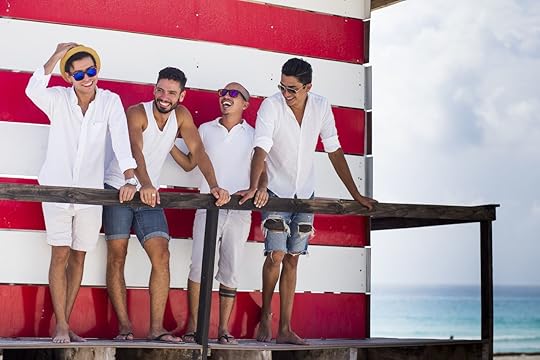
The US is chock-full of great last-minute Labor Day destinations, but when it comes to vacation spots with major LGBTQ+ events, the list gets a bit narrower. Luckily, there are a few fantastic places to celebrate the end of summer, even if you can’t make it to Mykonos. We’ve compiled some major gay-friendly destinations to check out for the long weekend, spots where you can drown your sorrows about the impending end of the season by sipping cocktails at beachside drag shows, or dancing the weekend away at the “gay Mardi Gras.” Here are five favorite queer-specific destinations for the holiday.
1. Austin, Texas
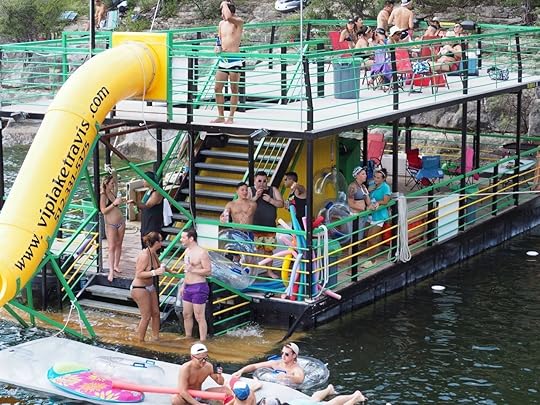
Photo: Splash Days/Facebook
Austin is famously weird — we all know the slogan — but it fully embraces its colorful side with the annual Splash Days party that takes place every Labor Day weekend.
The celebration in the Lone Star capital is a weekend of music, dance, and unity — the state’s best gay dance party weekend. Every ticket to the event benefits various LGBTQ charities; this year the beneficiaries are AIDS Services of Austin, Kind Clinic, and Out Youth. The main dance party is on Saturday night at Rain on 4th (just “Rain” to locals), one of the city’s many gay bars. You can nurse your hangover the next day by plunging into the refreshing waters of Lake Travis — the lake party is BYOR (bring your own raft).
While in Austin, stay at the gay-owned Hotel San José from renowned hotelier Liz Lambert, an ultra-hip bungalow-style property in the buzzy SoCo neighborhood. The hotel regularly hosts pool parties to cool off in the Texas heat, accompanied by endless frosé, and is within walking distance of many of Austin’s best shopping and eating — tacos, barbecue, and food trucks are a must during your ATX weekender.
2. New Orleans, Louisiana

Photo: Broussard’s Restaurant & Courtyard/Facebook
There’s a reason New Orleans’ Southern Decadence celebration is called the “gay Mardi Gras” — it’s just as eccentric, wild, and booze-infused, but with considerably more rainbow flags.
This Big Easy party includes a performance by the Backstreet Boys; Bearracuda, the biggest bear dance party in the US; and topless pool parties. It all culminates with the Southern Decadence parade on Sunday, filled with marching bands, fun costumes, and carriages full of drag queens. Like all New Orleans festivities, the French Quarter is the party’s lively epicenter.
It’s only appropriate to enjoy a drag brunch on Sunday — and on Friday and Saturday. The most famous is the Queen B brunch at Broussard’s, with various showtimes available to see the likes of Miss Starr Alexander, Miss Karli LaCorre, and more. Just don’t forget your dollars to tip.
Stay at the Ace Hotel, a laid-back, bohemian property in the Warehouse District. The hotel is getting in on the Southern Decadence festivities with its “Cake” party on Saturday at its jazzy Three Keys venue, or opt to imbibe at its Alto rooftop pool.
3. Provincetown, Massachusetts

Photo: Micha Weber/Shutterstock
Provincetown (better known as Ptown) is an idyllic village on the tip of Cape Cod and the capital of New England’s queer community. The outpost began as an artist’s colony and has since evolved into an immensely popular LGBTQ summer destination, but many of the creative influences are still felt today, with dozens of art galleries lining Commercial Street from the East End to the West End. Every Friday in the summer Ptown hosts Gallery Stroll, an evening when exhibits stay open late for visitors to peruse through the works of local artists.
During Labor Day weekend, Ptown will be celebrating the White Party, so bring your best white outfits before the color goes out of season. Sip cocktails and people watch at Tea Dance — one of the town’s major LGBTQ (but hetero-friendly) events — which is a daily dancy party at Boatslip Resort & Beach Club from 4:00 PM to 7:00 PM. RuPaul’s Drag Race fan-favorite BenDeLaCreme hosts her stellar burlesque-inspired production every night this weekend at the Crown & Anchor. Other notable drag queens performing this weekend include Jinkx Monsoon, Raja, Dina Martina, and more.
Of course, a visit to Cape Cod is not complete without copious lobster roll consumption. Dine at the casual yet popular eatery Canteen, serving the best of these New England delicacies. You can also go on a sightseeing trip with Whale Watch Dolphin Fleet, a whale watching cruise guided by experienced naturalists that lasts three to four hours.
4. Duluth, Minnesota

Photo: Duluth Superior Pride/Facebook
The Great Lakes region is most pleasant in the late summer months — home to frigid winters, Duluth transforms into a lakeside paradise during the (rather limited) sunny season. Minnesota’s second-largest city celebrates Duluth-Superior Pride over Labor Day weekend, one of the last queer festivities of the summer, with a variety of waterfront parties to enjoy while checking out this lesser-known destination.
The pinnacle party is at Bayfront Festival Park on Saturday, a free gathering to honor the Twin Ports LGBTQ community but welcoming to all, a token of the typical Midwestern friendliness. There will be live music, beer tents, local vendors, and fun games for families and children. From the park, you’ll be able to see Aerial Lift Bridge, the port city’s iconic steel landmark that was the US’ first transporter bridge.
After Saturday’s festivities, spend the rest of the weekend exploring the area’s low-key outdoor adventures with Duluth Experience, like kayaking through the world’s largest freshwater estuary or road biking along the Lake Superior’s picturesque North Shore. Duluth is home to many craft breweries — it’s not new to the trend, having begun brewing beer in 1881 — and Canal Park Brewery is the place to get boozy with a lakeshore view. The most rugged destination on this list, Duluth is wonderful for LGBTQ travelers seeking an active, nature-filled Labor Day weekend with a rainbow tinge.
5. Fire Island, New York

Photo: The Grove Hotel/Facebook
Fire Island is a barrier island about 50 miles southeast of New York City that becomes a veritable gay utopia in the summer months. The two predominantly LGTBQ enclaves on the island are Cherry Grove and Pines, two resort towns that have served as escapes from the fast-paced metropolitan lives of New York’s queer people for decades. Cherry Grove is more popular with lesbians and Fire Island Pines with gay men. Of course, people here are friendly and will welcome you no matter gender or orientation — but this dichotomy is good to keep in mind, depending on what you’re looking for. Both of these locales are car-free, meaning you can only get around by foot or bike, creating an intimately quiet community that is vastly different from nearby Manhattan.
Fire Island is full of many nightlife options, like the Pavilion, Ice Palace Nightclub, and Sip-n-Twirl. In Cherry Grove, the Grove Hotel hosts drag competitions (you’ll see plenty of drag queens in Fire Island) and Island Breeze is a modest eatery with delicious seaside bites and killer views of the Great South Bay. There are numerous “tea parties” happening all over the island at every hour, which sound classier than the reality — you will not find anyone drinking actual tea, but many alcoholic beverages instead.
Lodging options are slim during Labor Day weekend because many of the houses are booked months in advance, but Fire Island is still an accessible day trip by ferry from New York. 

More like this: Tinder debuts LGBTQ safety feature to protect users traveling internationally
The post The best US Labor Day destinations for LGBTQ travelers appeared first on Matador Network.

Paris rooftop farm largest in world

Paris, a city of two million inhabitants, might seem like an unlikely location for a massive farm to appear, but it’s actually going to become home to the world’s largest urban farm.
Situated atop the Paris Expo Porte de Versailles, a six-story exhibition complex in the 15th arrondissement, this under-construction urban farm will be the largest in the world, with its own on-site restaurant and bar. The farm will span about 150,695 square feet, grow over 30 different plant species, and produce approximately 2,200 pounds of fruit and vegetables each day in the high season.

Photo: Valode & Pistre Architectes
Pascal Hardy, founder of Agripolis, the urban farming company at the center of the project, said to The Guardian, “The goal is to make the farm a globally-recognized model for sustainable production. We’ll be using quality products, grown in rhythm with nature’s cycles, all in the heart of Paris. Our fresh produce will be used to feed the inhabitants across the south-west of the city […] thereby helping to reduce food miles.”
In addition to being the largest in the world, this new urban farm will also break new ground with its “vertical farming” techniques. This type of farming uses no soil, which minimizes the risk of pollutants. The carbon footprint will also be extremely low, as the farm will supply fruits and vegetables to people in the area.

Photo: Valode & Pistre Architectes
The giant urban farm will also offer residents of the area the chance to rent plots to grow their own produce and reconnect with nature and their food source. 

More like this: These beautiful, real-life secret gardens are the ultimate escape
The post New urban farm on Paris rooftop will be the largest in the world appeared first on Matador Network.

Travel website needs a Canine Critic

It’s tough enough to find a travel job these days, but if humans have to vie for their dream position with dogs, it’s going to get nearly impossible. Hotels.com is looking for a Canine Critic to review the best pet-friendly hotels in the world, but in this particular case, they’re not exactly an equal opportunity employer.
The hotel booking website specifically wants the role to be filled by a pooch. The successful canine candidate will receive 10 vouchers for dog-friendly hotels, each worth up to $200, but the best part is that you can be their plus one.
Liz Oakman, senior director and general manager of EMEA, which owns Hotels.com, said to Metro, “We love our pets more than we love our other half at times, so it’s no surprise that we’ve seen a huge increase in travelers wanting to take their furry plus one on holiday with them. Our hunt for a Canine Critic is our way of ensuring pet-friendly hotels really are up to ‘scratch’ with a four-legged expert’s ‘paw of approval.’”
To enter, upload a picture of your dog on Instagram, tag @hotelsdotcom, and use the #CanineCritic hashtag in the caption. You must also follow Hotels.com on Instagram. Entries must be submitted by 5:59 PM EST on Sunday, August 25, and winners will be notified by September 18 via private message on Instagram. 

More like this: This luxe Santa Monica hotel will send gourmet room service to your dog
The post This travel website is looking for a dog critic to review pet-friendly hotels around the world appeared first on Matador Network.

Traditional Isan cuisine and dishes

When chef Ohm Suansilphong began planning the Thai restaurant he hoped to open in America, he had a radical vision: He would ban pad thai. In the American lexicon of Asian dishes, there are three that are well-known: sushi, pho, and, of course, pad thai. A Thai restaurant that refused, on principle, to serve pad thai would be unheard of and risky. Still, in 2016, Suansilphong opened Fish Cheeks, which draws inspiration from cuisines across Thailand, its menu peppered with prawns, fish, and curry (and one noodle dish). In 2018, he opened the fast-casual Chicks Isan in Dekalb Market, a food hall in Brooklyn that’s one of the country’s best. A conversation bubble hovering above the outpost’s hand-drawn chicken mascot reads, “No pad thai zone!”
Suansilphong’s youthful face often breaks into a playful grin when speaking with him, his eyes sparkling mischievously as though he’s the keeper of some extraordinary secret. In a way, he is. Suansilphong learned to cook, alongside his brother and business partner, Chat, in the family kitchen in Sukhothai, in Thailand’s northern Isan region. Isan cuisine, though widely available throughout Thailand, is still mostly unknown to Westerners. With his New York City restaurants, Suansilphong wants to cook the food he grew up eating, the dishes that represent the home of his ancestors.
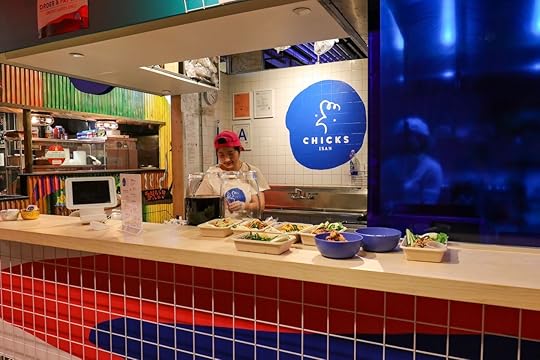
Photo: Molly Tavoletti
Through his translator Jenn Saesue, the co-owner of Fish Cheeks, Suansilphong tells me that very little pork is farmed in Isan’s dry climate. Instead, diet staples there are freshwater fish, insects (ant eggs are a popular ingredient in soup), and frog. In the past, traditional Isan cuisine didn’t include much pork. However, Suansilphong explains that modern interpretations of the region’s dishes, like those served at Chicks Isan, have by now evolved to include pork. Noodles do not appear in traditional Isan cuisine, a mandate that Suansilphong has decided to stick to.
In Isan food, the flavors are typically balanced between spicy and salty. Most dishes are grilled, steamed, or boiled rather than pan-fried, and many have little to no oil. The seasonings, however, will likely be familiar to fans of Thai food. Most dishes are garnished with lime, kaffir lime leaf, cilantro, leeks, scallions, and fish sauce.
And while the rest of Thailand eats Jasmine rice with dinner, in Isan, sweet sticky rice is a more common side dish. The gluey texture of the rice makes it easier to grab the leftover liquids and sauces in dishes like laab (minced pork with herbs) — a texture especially useful when eating the traditional way without utensils. Sticky rice, however, is where the sweetness of Isan food ends. There’s very little sugar added to main dishes to soften the blow from a hit of spice and salt.
That lack of sweetness might be part of the reason that Isan food has never caught on in the United States.
“Americans eat a lot of sweet stuff,” Suansilphong tells me through Saesue, with the caveat that he doesn’t want to make generalizations about our tastes. “When you’re talking about pad thai, it has tamarind, it’s sweeter. Whereas Isan food, it will be salty and spicy.”

Photo: Molly Tavoletti
Take the laab mu at Chicks Isan. The minced, boiled pork dish is topped with ground sticky rice, chili, lime, mint, scallion, and raw onion. Lime permeates every bite, making the dish tart and tangy. And then there’s the pungent and sour, though not unpleasant, funk of fermented fish. There’s no alluring sweetness to this food. It has bite, even snarl. So perhaps it’s no wonder that Americans, with their soft palates, have yet to embrace Isan cuisine.
To be fair, Americans aren’t alone in their hesitation to eat more funky fish. In Isan, fermenting and pickling fish is a common preparation technique, mostly as a result of the region’s geography. A river running through the region provides fresh water fish, but not in abundance. What is available needs to be preserved. Though fermented fish is necessary to keep everyone in the region properly fed, it’s still controversial. Saesue explains that, even in Thailand, fermented fish is a divisive topic — some love it, some hate it (she’s firmly in camp “love” and her mother is on the other end of the spectrum).

Photo: Molly Tavoletti
Saesue adds that in Thailand, Isan food is well-known and available throughout the country. The region’s dishes are popular street food, usually served by a vendor or on a portable cart. That’s part of the reason Suansilphong wanted to open Chicks Isan in a food court, because he still sees Isan cuisine as best enjoyed as a low-effort casual meal.
There are multiple reasons for this. For one, many Isan dishes don’t take a lot of heat to prepare. Most of the components, like in papaya salad, are ready to eat and the dish simply needs to be assembled. Suansilphong goes so far as to say that he wouldn’t represent Isan food in America as fine dining food.
As for why it isn’t more popular in Western cultures, Saesue believes there are simply less people from the Isan region who come to the US and open restaurants. Hence the proliferation of noodle dishes like pad thai.
Suansilphong is bored, it seems, with America’s myopic vision of Thai cuisine, but he was never on a crusade to spread the holy word of Isan cuisine. He just missed the food from home.
“I just wanted to eat [Isan food],” he jokes about his reasons for opening his restaurants. “There are restaurants that sell Isan food, just not the grilled chicken that I like.”
When the laughter clears, Saesue gets serious.
“We want to educate people about Thai food,” she explains. “It’s not that we don’t like pad thai. Don’t get us wrong. We like it. We just see a lot of it, and we don’t want to sell it. When we go to Thailand, and we don’t even eat that. It’s a good dish, but there are other better dishes.”
Signature Isan dishes to try

Photo: jkcDesign/Shutterstock
Som tum: This dish combines shredded unripe papaya along with the signature flavors of Isan cuisine, such as fish sauce, chilis, lime, and a dash of palm sugar. The ingredients are pounded together using a mortar and pestle. Fermented fish or crab is also often added to the salad.
Sai krot isan: These fermented sausages are among the most popular street foods in Isan. Isan sausages are served with cabbage, chilis, and slices of fresh ginger, and have a distinct sour-salty flavor.
Laab: This minced meat dish is seasoned with fish sauce and slices of lime, then topped with ground rice. Laab is among the spiciest Isan dishes.
Tom sab: The main ingredient in this clear broth soup is cow intestines (otherwise known as tripe). Don’t be intimidated by internal organs. Additions of kaffir lime leaf and lemongrass give this soup a fragrant citrus flavor.
Kai yang: This simple grilled chicken dish is typically served alongside sticky rice or papaya salad. Kai yang is typically eaten with jeow bong, a slightly sweet chili paste made with garlic and fish sauce. 

More like this: Royal Thai cuisine is the most beautiful food you can eat. Here’s where to try it.
The post If you love Thai cuisine, you need to start paying attention to Isan appeared first on Matador Network.

Rocky Mountains microplastics

Last spring, we were unfortunately made aware that microplastics had made their way to the top of the Pyrennees mountains, and now we know that Colorado’s Rocky Mountains, one of the most spectacular natural places in the US, are also plagued with small fragments of plastic.
US Geologic Survey researcher Gregory Weatherbee was analyzing rainwater samples from seven areas between Boulder and Denver, in the Rocky Mountains, when he came upon a startling amount of microscopic plastic fibers.
“I think the most important result that we can share with the American public,” he said to The Guardian, “is that there’s more plastic out there than meets the eye. It’s in the rain, it’s in the snow. It’s part of our environment now.”
This unexpected discovery shows that not only those in urban centers are at risk of inhaling microplastics. While more research is needed to determine the exact risks for humans, studies show that plastic particles impair reproduction and damage the digestive tracts of various animal species.
It’s unclear right now how to prevent microplastics from spreading, or how they can be collected, but the simplest solution is to produce less plastic. 

More like this: 6 steps you can take today to become a zero waste traveler
The post It’s raining microplastics in the Rockies — literally appeared first on Matador Network.

Castles to visit in Latvia

Western Europe might be famous for its staggering number of castles, but that doesn’t mean that France, the UK, and Germany should snag all of the glory. Some of the world’s most beautiful, unique castles are located in places you might not expect, such as Latvia. Although it takes under four hours to drive from one end of the Baltic nation to another, there are around 140 castles in the country, and it’s very much worth the detours to see as many as you can on your trip. From the more modern 18th-century Rundale Palace to the 13th-century Sigulda Castle, the breadth and variety of Latvia’s castles is staggering. Here are the five castles we recommend you check out while visiting Latvia.
1. Cesis Castle

Photo: Aleksandrs Muiznieks/Shutterstock
Located in the heart of Gauja National Park, Cesis Castle dates back to the 13th century. Originally built by the Livonian Brothers of the Sword — a Catholic military order — before falling into the hands of the Teutonic Order (another religious order), it was besieged in 1577 by Russia’s Ivan the Terrible, and sustained serious damage during the attack. All things considered, the castle is relatively well preserved, and has become among the most-visited castles in the Baltics. It has a high tower that visitors can climb for a great view of the surrounding town of Cesis, especially the picturesque and colorful Old Town, as well as creepy dungeons down below, where prisoners were kept, for tourists to get their dose of macabre.
Nowadays, the castle is used not only for tours, but as a venue for theatrical shows, games for children, medieval-style dinners, and historical reenactments.
2 and 3. Old and New Sigulda castles

Photo: Evdoha_spb/Shutterstock
Although technically two separate castles, the Sigulda Medieval Castle and New Castle of Sigulda are right next to each other, and incredibly easy to visit in tandem. The Castle of the Livonian Order in Sigulda — or Sigulda Medieval Castle — was built in 1207 as an outpost on the waterways of the Gauja Valley, and then converted into a convent home by William of Modena, the Pope’s official representative. At this time, a church was built inside the structure and Sigulda Castle was designated its own parish. An important defensive stronghold and now a popular attraction for visitors, the castle’s walls have been fortified and restored many times, and the building hosts an exhibition of medieval weapons in its northern tower.
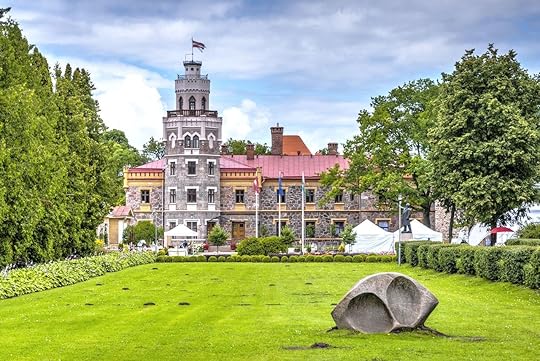
Photo: Dinozzzaver/Shutterstock
The New Castle of Sigulda was built in 1878 in the Neo-Gothic style. It originally served as the home of the noble Russian Kropotkin family, and in 1922 it became a retreat for authors and other literary types. Significant restorations were done in 1934, when the castle was acquired by the Latvian Press Society, including the expansion of the terrace and addition of a new balcony. During World War II, the castle was used as a headquarters for a division of the German army, and later as a recreation house for USSR state officials. Now it’s home to the Sigulda Region Council.
4. Turaida Castle
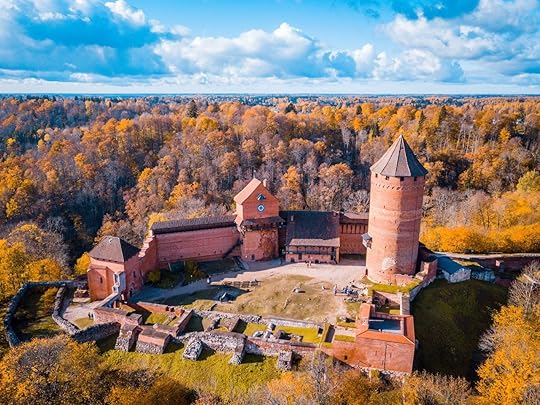
Photo: Ksenija Toyechkina/Shutterstock
Also located in Sigulda, about eight minutes down the road from the two Sigulda castles, Turaida Castle dates back to 1214. The stone castle, initially constructed for Albert of Riga — the alleged founder of Latvia’s capital of Riga — sits on a 260-foot cliff between two ravines, and you can climb up the 88-foot tower for sweeping views of the Gauja Valley. Although time took its toll on the castle in its original form, the structure was restored in 1976 and now hosts exhibitions dedicated to its history.
5. Rundale Palace

Photo: Ikars/Shutterstock
Just an hour south of Riga, Rundale Palace, reminiscent of France’s Versailles, might be Latvia’s most stately castle. The Baroque edifice was built in the late 18th century for the Duke of Courland. If you thought the castle’s sprawling French gardens and imposing exterior were impressive, just wait until you see the inside. Adorned with art and sculptures by German and Italian artists, the White Hall, Gilt Hall, and Great Gallery in the castle’s eastern wing are open to the public; there’s even a museum that educates visitors on Latvian history.
The palace is now used as a venue for music festivals, as well as accommodations for foreign dignitaries.
6. Bauska Castle
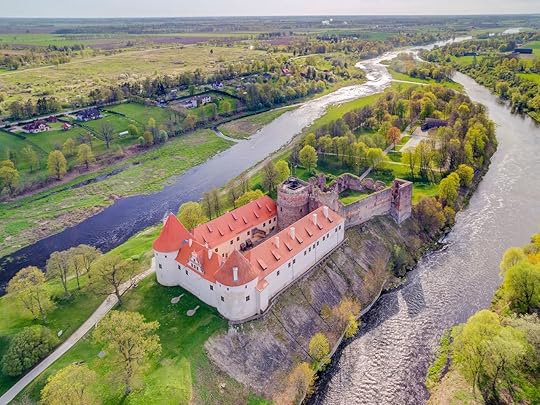
Photo: Dmitrii Iarusov/Shutterstock
Located on the outskirts of the small Latvian town of Bauska, Bauska Castle stands on a slice of land where the rivers Musa and Melemele meet to form the Lielupe. The castle itself is divided into two sections — the old castle of the Livonian Order, built during the 15th century, and the newer part of the castle that served as a residence for the Dukes of Courland, built in the 16th century. The castle was an important defensive outpost — a collection of canons should make that clear. While only ruins remain from the original Livonian castle, the palace has been fully restored, and even has a cafe and museum. 

More like this: 10 gorgeous palaces in St. Petersburg
The post 6 castles you should check out on your trip to Latvia appeared first on Matador Network.

How to find a doctor abroad

Imagine, if you will, you’re in a country where the local water isn’t so good. Like international-travel-warning not-so-good, but in a drunken fit of dental hygiene, you brushed the hell out of your teeth with tap water. You wake up and have a horrifying realization you’re about to spend the next few days of your trip holed up in the bathroom, and you try and think of how you might be able to make it stop. Before it’s too late.
You COULD go down to the local hospital, which is probably full of locals with actual emergencies who’d rather not wait behind a tourist who had some bad tap water. What you really need is a gastroenterologist, but where would you even find one? And how do you say “gastroenterologist” in Nepalese?
This and other gut-wrenching conundrums could soon be a thing of the past as an app called Air Doctor aims to connect sick travelers to doctors overseas. The Israeli company was founded about a year ago by a group of people who’d found themselves in similar situations like the one mentioned above, and decided the world needed to do something about it.
“They were traveling abroad and got sick and noticed it’s impossible to get help,” says Yuval Zimmerman, Air Doctor’s director of marketing and global partnerships. “You look on Google and you find stuff not in your language, you don’t know who to trust. And the hotels or your insurance company just send you to the hospital.”
So leveraging a vast network of international health care professionals, they set out to create Air Doctor. And thus far, it looks like it could change how we find health care abroad.
Seeing the ideal doctor in a not-so-ideal situation
Air Doctor’s functionality is painfully simple. You type your current location into the mobile-friendly site or app, select the type of doctor you’re looking for, then scan the results. Much like searching for hotels, rental cars, or airfares, it’ll display your options by price or distance from you.
Perhaps its most useful feature is the ability to filter by language spoken, so if you do find yourself in a town where it seems nobody speaks English, at least you might find a doctor who can.
If transportation is an issue, you can also filter by doctors who make house (or in this case, hotel) calls, and see who has appointments available soonest. If only there were ways to make doctor’s appointments at home this easily.
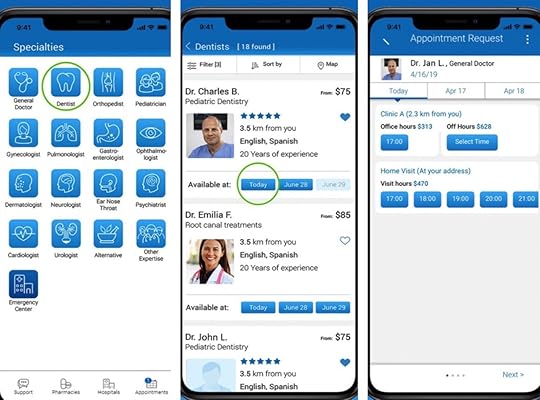
Photo: Air Doctor
Of course, actually paying for Air Doctor can get a little dicier. If your home health insurance covers you for travel, look on Air Doctor’s site to see if they work directly with the app. If so, payment is as easy as walking in the door, once you’ve submitted your insurance information.
If your insurance company doesn’t work with Air Doctor, you’ll have to pay upfront. But keep the invoice and if you’re covered, your insurance company will reimburse you.
If you don’t have travel insurance as part of your general health insurance, you may want to look into it or get special travel insurance for your trip. Consulting Air Doctor’s list of providers before leaving might help you streamline that process too, but it’s not necessary.
How do we know these doctors are any good?
Like eating in unfamiliar restaurants and giving literally all of your personal information to Google, sometimes you just have to put your trust in strangers. Though you might not know Air Doctors from Air Supply, the platform’s competitive advantage is its network of doctors, who’ve been vetted before being placed on the app.
“The main value we have is our doctors,” says Zimmerman. “We check and verify the doctors are licensed in their practicing country, so you know they’re doctors and not posing to be doctors. We have an additional vetting process that includes a lot of things, people on the ground, getting recommendations both from word of mouth and other doctors. And also local governments.”
The complete process, Zimmerman says, is proprietary, since the doctors themselves are their selling point. But he also said in the year they’ve been operating, they have not received one complaint.
“The strongest we are is in Europe,” Zimmerman added, saying Air Doctor’s network has grown from 500 doctors a year ago to over 8,000 today. “France, Germany, Spain, Italy, Western Europe we have covered. Thailand and Australia, also very strong. Mexico too. We’re just been building up the United States in the last month, and we’re also starting in South America.”
So for the moment, this tool can be especially helpful on your end-of-summer Euro trip. But by next summer’s cross-country American road trip, you might have an easier way of finding a local doctor than ever before. Nobody wants to spend their vacation in an emergency room, and most of the time you don’t have to — especially now that there’s an easier option on the table. 

More like this: Easiest travel destinations for celiacs and tips on how to avoid getting ill
The post This new app can help you find a legit doctor overseas appeared first on Matador Network.

What to do at Hersheypark

Anyone who grew up in the Northeast knows of Hershey, Pennsylvania. Hershey is more accessible in the north than Disney World, and has roller coasters and larger-than-life candy bars that are just as tempting. Maybe you grew up making repeat pilgrimages to the park, or maybe you went once and still feel intimately familiar with the destination. But if you aren’t from this corner of the country, more than likely, that’s not the case.
Hershey is an ever-evolving city, constantly adding new attractions, exhibits, and seasonal activities. The Hershey Story Museum, for instance, is celebrating its 10th year in operation. As an adult returning to the area, the iconic Hershey’s Kiss street lights were just about all I recognized.
Which made it all the more exciting as I watched a flight of warm drinking chocolates coming my way while sitting on the ground floor cafe of the Hershey Story Museum.
I’d tried flights of beer and wine before, but never chocolate. The barista instructed me how best to proceed, starting with the darkest chocolate and working my way to the lighter ones with less cacao. The map on the counter was my guide. The barista pointed to a box labeled “Tanzania” that read, “this rare chocolate from the rich soil of East Africa represents a small percentage of the world’s chocolate production. 75% cacao.”
I took my first taste. It was rich, exquisite, and gone in one sip. Apparently, chugging is even more of a hazard with single-origin drinking chocolate than it is with alcohol. I tasted the next two, from Venezuela and Mexico. Each disappeared just as quickly, but it wasn’t until I got to the option with 40 percent cacao content from Ghana that I appreciated the distinction between dark and milk chocolate and experienced a sense of bliss only sugar can bring.

Photo: George Sheldon/Shutterstock
Hershey’s Chocolate World, which used to only have trolley and factory tours with a free snack-sized chocolate at the end, now also has a 4D movie and the chance to make your own chocolate bar, complete with a custom tin. The site has also upgraded select freebies from snack-sized to full-sized.
In May 2019, Hershey’s Chocolate World unveiled its latest project, “Hershey’s Unwrapped: A Chocolate Tasting Journey.” Part class, part show, and part tasting, this interactive experience encourages guests to use all five senses in assessing chocolate, from the feel of snapping off a piece of a candy bar to the aroma of Hershey’s most popular brands.

Photo: Hershey Gardens/Facebook
Across the street, Hershey Gardens uses chocolate to teach about horticulture. Anthony Haubert, communications and public relations manager for the M.S. Hershey Foundation, notes that the complex “features a large variety of chocolate-themed plants throughout the Children’s Garden. The plants either smell like chocolate (such as chocolate mint) or have a chocolate name, such as Hot Cocoa Rose and Chocolate-Covered Cherry Coleus and many more.”

Photo: MeltSpa/Facebook
Hersheypark isn’t just a haven for kids anymore, either. Recent additions include adult-friendly options like the day spa that opened in 2017 at the Chocolate Spa in the high-end Hershey Hotel. The MeltSpa by Hershey is another spa that lets guests indulge in services like a dark chocolate body scrub or cacao facial at slightly lower rates than the Chocolate Spa.
The biggest upgrade, however, is yet to come. In 2020, Hersheypark is revealing Chocolate Town, a $150 million investment with five new dining options that will span 23 acres and feature a new entrance to the theme park: a one-of-a-kind fountain where the water shoots up at varying heights to form a Hershey’s Kiss. The new food options include an ice cream parlor and a themed restaurant that will be open year-round with a second-floor patio and panoramic views of the park.

Photo: Hersheypark/Facebook
Hersheypark is also installing its 15th roller coaster, called Candymonium, in Chocolate Town. It’ll be the longest, tallest, and fastest in the park. This is in addition to Boardwalk, an 11-acre water park added to Hersheypark in 2007, and seasonal offerings like the Christmas Candylane celebration and Hersheypark in the Dark, held during Halloween.
You may think you know Hershey, but this is a vastly different landscape than the one you visited as a child. Whether you want to drink chocolate, cover yourself in it, or make your own, there are plenty of sweet reasons to start planning your next trip, whether or not you have children. 

More like this: The ultimate European bucket list trip for chocolate lovers
The post Hershey, Pennsylvania, is even more chocolate-filled now than it was when you were a kid appeared first on Matador Network.

Matador Network's Blog
- Matador Network's profile
- 6 followers



